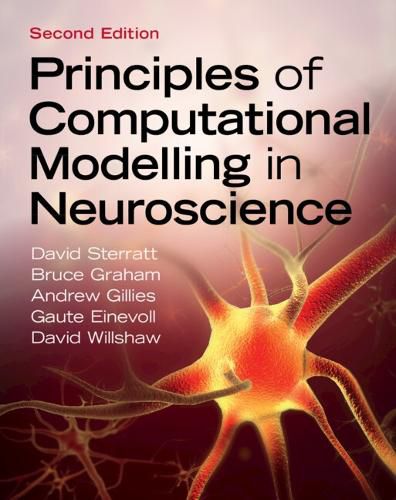Readings Newsletter
Become a Readings Member to make your shopping experience even easier.
Sign in or sign up for free!
You’re not far away from qualifying for FREE standard shipping within Australia
You’ve qualified for FREE standard shipping within Australia
The cart is loading…






Taking a step-by-step approach to modelling neurons and neural circuitry, this textbook teaches students how to use computational techniques to understand the nervous system at all levels, using case studies throughout to illustrate fundamental principles. Starting with a simple model of a neuron, the authors gradually introduce neuronal morphology, synapses, ion channels and intracellular signalling. This fully updated new edition contains additional examples and case studies on specific modelling techniques, suggestions on different ways to use this book, and new chapters covering plasticity, modelling extracellular influences on brain circuits, modelling experimental measurement processes, and choosing appropriate model structures and their parameters. The online resources offer exercises and simulation code that recreate many of the book's figures, allowing students to practice as they learn. Requiring an elementary background in neuroscience and high-school mathematics, this is an ideal resource for a course on computational neuroscience.
$9.00 standard shipping within Australia
FREE standard shipping within Australia for orders over $100.00
Express & International shipping calculated at checkout
Taking a step-by-step approach to modelling neurons and neural circuitry, this textbook teaches students how to use computational techniques to understand the nervous system at all levels, using case studies throughout to illustrate fundamental principles. Starting with a simple model of a neuron, the authors gradually introduce neuronal morphology, synapses, ion channels and intracellular signalling. This fully updated new edition contains additional examples and case studies on specific modelling techniques, suggestions on different ways to use this book, and new chapters covering plasticity, modelling extracellular influences on brain circuits, modelling experimental measurement processes, and choosing appropriate model structures and their parameters. The online resources offer exercises and simulation code that recreate many of the book's figures, allowing students to practice as they learn. Requiring an elementary background in neuroscience and high-school mathematics, this is an ideal resource for a course on computational neuroscience.